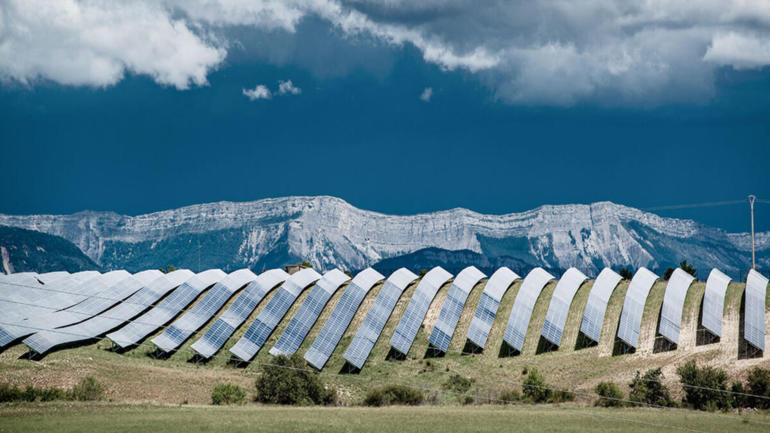As more and more businesses understand the importance of integrating natural capital considerations into their decision-making, there's a corresponding rise in natural capital assessments. But many people still don't know what's needed to complete an assessment. How much does it cost? What skills and data do we need? How can we secure the resources to carry out the assessment?
The new Natural Capital Protocol addresses these questions and makes things easier by providing a standardized framework that everyone can use.
The Protocol describes the technical expertise and skills needed for conducting the best possible assessment. Most companies don't have these resources internally, so they need external help: from a consulting firm, an NGO or academic institute - and the Protocol helps them understand these needs so they can choose the best way forward.
How much will it cost?
The answer is: it depends on what you're trying to do. Assessments are like snowflakes - no two are alike. It will depend on the scope of the assessment, what you're asking for and what data is already available.
Some of the Protocol pilot testers - like our members Nestlé and Roche - estimated they spent about USD $50,000 on consulting services for their assessments over a six-month period. Some companies spend less, others spend more.
Dow, Kering and Natura have invested significantly more over a longer term, for in-depth assessments that contribute to their multi-year strategic ambitions
Duncan Pollard, Stakeholders Engagement in Sustainability, Nestlé says: "The range of what consultants have to offer is huge: one consultant gave us a seven figure quote for a comprehensive 18-month study; another provided a first analysis as part of the pitch. Just going through this exercise opened our eyes to the costs, complexity and differences in scope of the approach to natural capital assessments."
The Protocol can help companies navigate these kinds of situations by making sure the services required align with the assessment's objective.
Skills and data: what have you got and what do you need to get?
Most companies believe that the real value of using consultants is in the valuation itself, meaning the number-crunching analysis. This is because - unfortunately! - the Protocol isn't a calculator and it won't tell you which monetary values to use in any given situation. However, companies can start to conduct many other aspects of an assessment themselves by doing things like getting the project going, scoping the assessment and integrating natural capital considerations into internal processes.
- It's usually much more efficient to build on
- existing data that's readily available in-house
- and the Protocol provides guidance on gathering
- and using that data too.
For example, many companies have data on their own GHG emissions, water, waste, and some also have results of product Life Cycle Assessments - this existing information can provide a really good starting point for a natural capital assessment. How applicable it is will depend on the objectives and scope of the assessment though, so it's important to find the balance between getting perfect data (e.g. from monitoring in the field) and using proxies that are not as accurate but can be more practical and still lead to better decisions.
How can we secure the resources?
Let’s start with the easy option: Your senior management is convinced that natural capital considerations can actually make a company more successful. It is part of the company's strategy, meaning that resources are mobilized to carry out assessments, and typically internal engagement is much smoother.
According to Mark Weick, Director, Sustainability, Dow, "Our senior management recognized how dependent Dow is on natural capital, and this was enhanced during droughts in Texas which affected the company. Their commitment of USD 10 million over five years to work on natural capital with The Nature Conservancy and others has allowed the company to accelerate progress in this field."
As the Protocol helps companies make more effective decisions, we will begin to see more progress like Dow's in different sectors.
In many cases, natural capital assessments can be a bottom-up effort. Trying to drive natural capital assessments from sustainability, environment or health and safety departments is sometimes difficult, but nevertheless, the Protocol provides guidance on integrating the assessment into the business itself
One way to facilitate engagement internally can be to show that "many companies are already doing natural capital assessments; they're just using different terminology and steps. The Protocol provides a framework for standardizing the process" according to Doug MacNair, Technical Director, Economics and Decision Sciences, ERM.
There are positive signs that a transition is already occurring. More businesses see natural capital as strategically important. Rosie Dunscombe, Principal Consultant at AECOMnotes that "buy-in must extend beyond the sustainability team. To support this engagement, it is important to look beyond those benefits that can be valued through the natural capital assessment itself, and acknowledge how a natural capital approach can motivate organizational change in support of broader business goals." This means that there will be more leadership from the top to better measure, value and then integrate natural capital into business.
Other consulting firms such as PwC see that there is a shift taking place, with requests for advice increasingly coming from strategy or operations teams, alongside continuing interest from sustainability departments. This a good sign that consideration of natural capital is moving up the corporate agenda.
The bottom line is that although carrying out a natural capital assessment is technical, it's also achievable. Not every assessment has to be a huge undertaking, so companies should start off with a scope that makes most sense to their situation. The Protocol will help you do this.
Finally, we must make sure the information obtained from the assessment is included in core business decision-making. This will ensure you have the best possible impact on your business, and on the environment.
This article is part of a series around the Natural Capital Protocol that WBCSD led the development of on behalf of the Natural Capital Coalition, working with many experts. Check out WBCSD's views on external disclosure and the making of the natural capital protocol.








